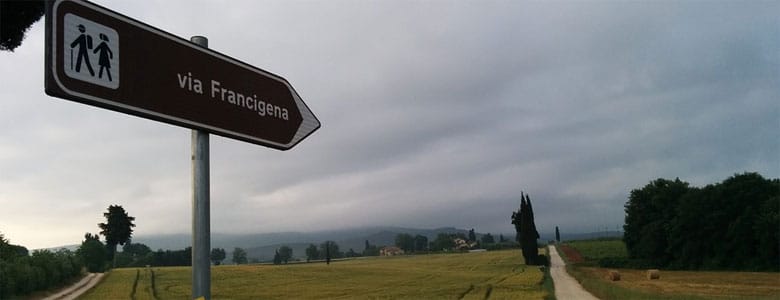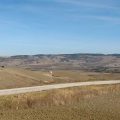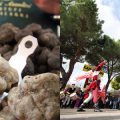The Via Francigena (or Via Romea) is an ancient pilgrims’ route that goes from Canterbury to Rome. This, at least, is the official and traditional concept of the path. But actually, apart from visiting the city of the martyrdom of St. Peter and St. Paul, during medieval times (and throughout the following centuries) pilgrims travelled to another major destination too: The Holy Land. Therefore, their pilgrim route continued south of Rome, reaching the ports of Apulia through the consular Roman roads known as Via Appia, Via Casilina and Via Appia Traiana. In April 2016, the European Institute of Cultural Routes approved a project for extending the Via Francigena in southern Italy!
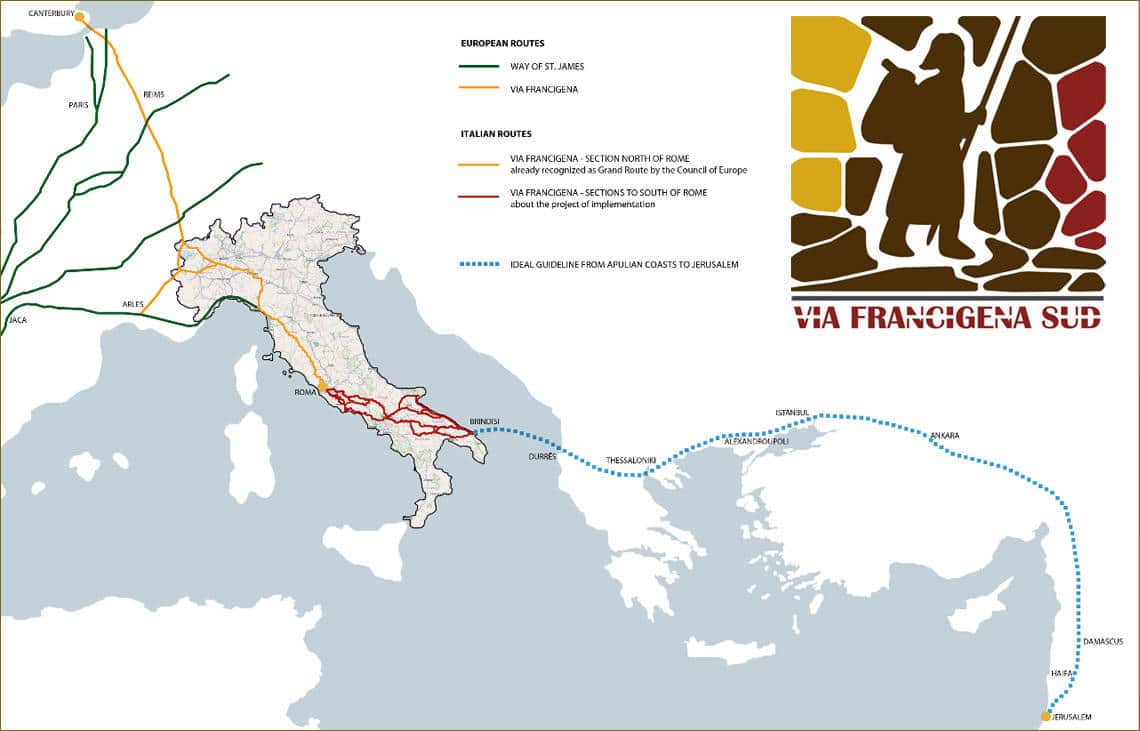
The entire Francigena Way across Italy, and beyond. Image credit: viafrancigenasud.it
A new, official project: Via Francigena in southern Italy
After 12 years of hard work by the Via Francigena nel Sud project, the pilgrim route from Canterbury to Rome will extend over 800 km south of the Capital, crossing the central and southern regions of Lazio, Molise, Campania, Basilicata and Apulia. This means that the Francigena Way will become the longest cultural itinerary in the world, with more than 2300 km of length!
This was a great decision, incidentally taken in the year that the Italian State proclaimed as the National Year of Walks (Anno Nazionale dei Cammini), in an effort to promote the exploration of Italy’s cultural heritage by foot.
The Via Francigena in southern Italy initiative is headed by architect Paolo Walter di Paola in collaboration with the Italian Geographic Society and with other local associations and people. It will involve 43 dioceses and about 250 municipalities between Lazio’s countryside and Apulia’s coastline.
Traveling today, off the beaten path
Even though there is still no official Southern Francigena with sanctioned signage and partner accommodation and restaurants, you can still explore this ancient and contemplative path, finding authentic properties where to stay, eat and enjoy local activities.
Ancient pilgrims traveling from Rome to Apulia, could leave the Capital traveling along different ways. They could access Via Prenestina and walk by the villages of Gabii, Palestrina, Anagni, Ferentino, Frosinone, Aquino, Cassino, Venafro and Teano. Or they could take Via Labicana, passing by Labico, Valmontone and all the aforementioned villages after Anagni, just like those who walked on Via Latina after encountering Tuscolo and Artena. There was also a longer path along the Via Appia, which made the itinerary one day longer but was more comfortable, especially for carriages. This route passed by Ariccia, Lanuvio and Capua.
All pilgrims would then pass by Benevento, where they would take the Appia Traiana Way until the Apulian coast. Some would stop at the Sanctuary of San Michele Arcangelo on the Gargano Promontory, and finally proceed to the heel of Italy, to catch the boat to the Holy Land from Brindisi or Otranto.
If you are looking for off-the-beaten path itineraries in southern Italy that offer you a spiritual experience, cultural insights, historic treasures and delicious food, these places along the Via Francigena del Sud do just that! Here are some examples to inspire you…
Located in Lazio’s traditional area of Ciociaria, Anagni is an important historical town. In the 13th century, many popes and important families lived here and erected impressive buildings that we can still admire and explore today. Among the illustrious princely families that lived here were the Borgia, Colonna, Orsini and Emperor Frederick II of Swabia. The local wine production in Anagni is connected to its ancient popes. For example, the Cesanese ruby-red wine was the official wine at the Papal Court of Popes Innocent III, Gregory IX, Alexander IV and Boniface VIII. If you happen to be traveling through Anagni in October, make sure to participate in its Grape Festival to celebrate local wines!
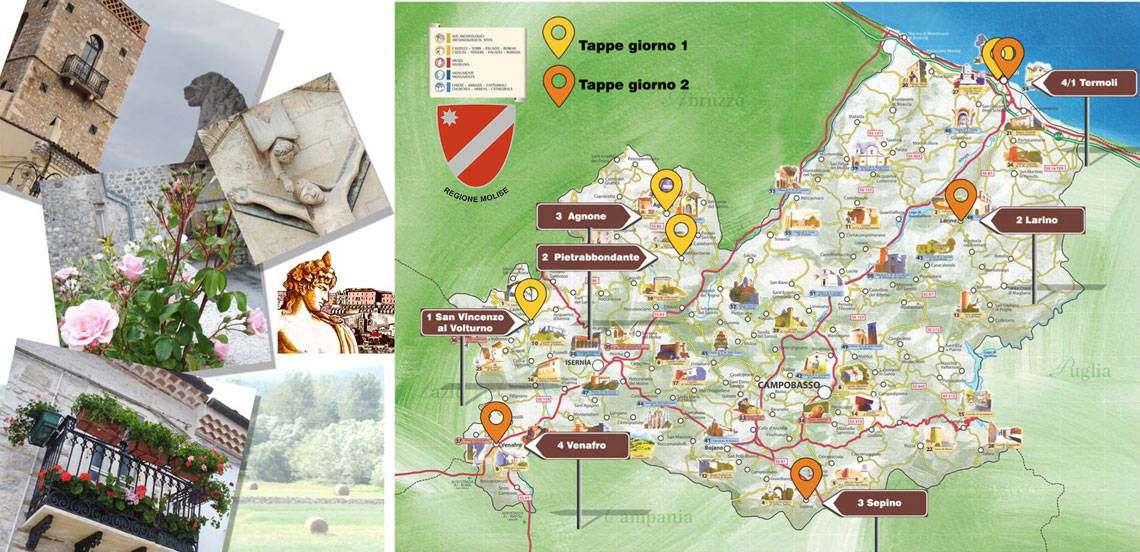
Ever considered the tiny region of Molise? Image credits: Circolo Culturale Prenestino “Roberto Simeoni”
The Sanctuary of Monte Sant’Angelo, one of the “pit-stops” for ancient pilgrims traveling south, is today a UNESCO World Heritage Site. Located on Apulia’s beautiful Mount Gargano, it is the oldest shrine in Western Europe dedicated to Archangel Michael. According to local accounts, the sanctuary was built in the cave where, in 490 A.D., the apparition of San Michele Arcangelo came to a shepherd. You could combine your visit here with ecotourism in the Gargano National Park, culinary lessons to learn how to cook local orecchiette, and cultural visits in tiny villages on the Tavoliere delle Puglie, the largest Italian plain after the Pianura Padana.
Are you searching for authentic destinations away from mass tourism?
Perhaps somewhere spiritual where to bond with family and friends? Or somewhere inspirational for corporate retreats? Or the perfect location for a dream destination wedding? Contact Italian Special Occasions DMC now

